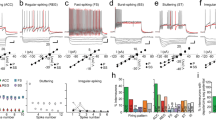Abstract
Previous work from this laboratory has demonstrated that monosynaptic inputs from the brachium of the inferior colliculus (BIC) to the medial subdivision of the medial geniculate nucleus (mMG) strengthen as a result of associative conditioning with an acoustic conditioned stimulus (i.e., fear conditioning). One model that has been proposed to underlie certain types of neuronal plasticity involves the recruitment of N-methyl-d-aspartic acid (NMDA)-type glutamate receptors. The purpose of the present study was to examine the relative contributions of glutamatergic NMDA and non-NMDA receptors to synaptic transmission within this pathway. Individual contributions of the specific receptor types were assessed through the use of 2-amino-5-phosphonovaleric acid (AP5), a selective NMDA receptor antagonist, and 6-cyano-5-nitroquinoxaline-2,3-dione (CNQX), a non-NMDA receptor antagonist. Bipolar stimulating electrodes were stereotaxically implanted in BIC and recording electrodes (attached to dual 32-gauge cannulae for delivery of drug) were positioned in mMG of New Zealand albino rabbits. Single pulses (150 µs, 100–350 µA) delivered to BIC resulted in short-latency (<4 ms) responses in mMG. BIC-evoked single-unit activity was recorded from mMG before, during, and at several intervals after injection of AP5, CNQX, and/or artificial cerebrospinal fluid (ACSF). Injection of either AP5 or CNQX, but not ACSF, significantly attenuated the short-latency BIC-evoked responses in the vast majority of cells tested. These findings suggest that the monosynaptic pathway from BIC to mMG is glutamatergic and that this pathway frequently employs NMDA-type receptors during electrically stimulated synaptic transmission. Due to the NMDA receptors’ proposed role in plasticity (e.g., long-term potentiation), these results may have implications for understanding the mechanisms of synaptic plasticity observed at this synapse during associative learning.
Similar content being viewed by others
Author information
Authors and Affiliations
Additional information
Received: 26 November 1997 / Accepted: 27 August 1998
Rights and permissions
About this article
Cite this article
Webber, T., Green, E., Winters, R. et al. Contribution of NMDA and non-NMDA receptors to synaptic transmission from the brachium of the inferior colliculus to the medial subdivision of the medial geniculate nucleus in the rabbit. Exp Brain Res 124, 295–303 (1999). https://doi.org/10.1007/s002210050626
Issue Date:
DOI: https://doi.org/10.1007/s002210050626




